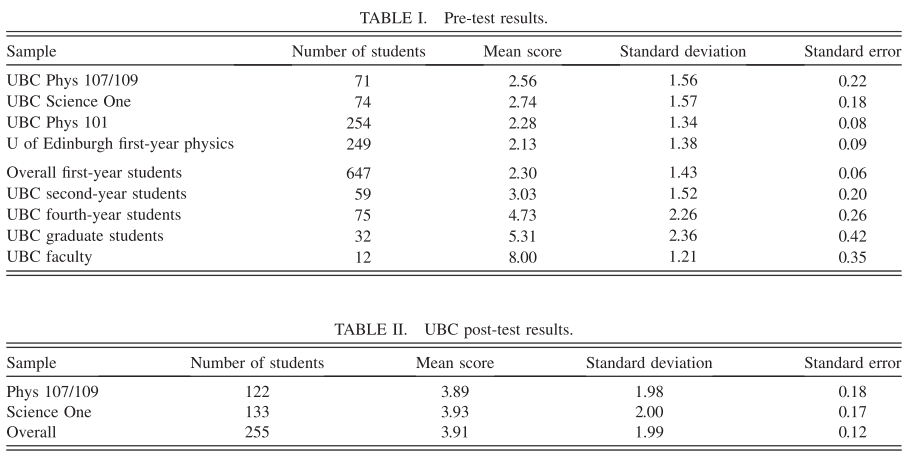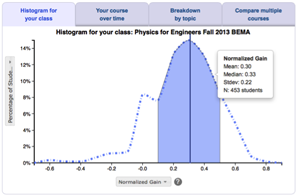Developed by James Day and Doug Bonn
| Purpose | To probe student abilities related to the nature of measurement and uncertainty and to handling data. |
|---|---|
| Format | Pre/post, Multiple-choice |
| Duration | 30 min |
| Focus | Lab skills (uncertainty in measurement, relationship between functions graphs and numbers) |
| Level | Graduate, Upper-level, Intermediate, Intro college |
Sample question from the CDPA:
Student A measures the flow rate of water coming from a tap and reports it to be (90 ± 12) millilitres per second. Student B follows a different measurement procedure and reports the flow rate to be (110 ± 1) millilitres per second. How long would it take to fill a 1 litre container?
(a) 10.0 s
(b) 9.1 s
(c) 11.1 s
(d) 9.5 s
(e) 10.6 s
CDPA Implementation and Troubleshooting Guide
Everything you need to know about implementing the CDPA in your class.
Login or register to download the implementation guide.
more details
This is the highest level of research validation, corresponding to all seven of the validation categories below.
Research Validation Summary
Based on Research Into:
- Student thinking
Studied Using:
- Student interviews
- Expert review
- Appropriate statistical analysis
Research Conducted:
- At multiple institutions
- By multiple research groups
- Peer-reviewed publication
The multiple-choice questions on the CDPA were developed based on established learning goals for an introductory lab course. Open-ended questions were created based on these learning goals, and given to students, of whom a subset were interviewed about their answers. Next, multiple-choice versions of the questions were created and given to students and followed-up with more student interviews. The CDPA also underwent expert review. Appropriate statistical analysis of reliability, difficulty and discrimination was conducted and reasonable values found. The CDPA has been given to over 800 students at two institutions and the results published in one peer-reviewed paper.
References
- J. Day and D. Bonn, Development of the Concise Data Processing Assessment, Phys. Rev. ST Phys. Educ. Res. 7 (1), 010114 (2011).
- J. Day, J. Stang, N. Holmes, D. Kumar, and D. Bonn, Gender gaps and gendered action in a first-year physics laboratory, Phys. Rev. Phys. Educ. Res. 12 (2), 020104 (2016).
- I. Kontro, Development of Data Processing Skills of Physics Students in Intermediate Laboratory Courses, in Concepts, Strategies and Models to Enhance Physics Teaching and Learning (2019), p. 101.
We don't have any translations of this assessment yet.
If you know of a translation that we don't have yet, or if you would like to translate this assessment, please contact us!
Score the CDPA on the PhysPort Data Explorer
With one click, you get a comprehensive analysis of your results. You can:
- Examine your most recent results
- Chart your progress over time
- Breakdown any assessment by question or cluster
- Compare between courses
| Typical Results |
|---|
Typical results from Day and Bonn 2011: Incoming first-year students at the University of British Columbia (UBC) and at the University of Edinburgh perform about at the level of chance on the CDPA. Random guessing produces a score of 23.5%. Fourth-year students at UBC (N = 75), without ever having taken a course that addresses these data handling skills explicitly, score around 47 ± 3%. Graduate students (N = 32) score at 53± 4% and faculty score at 80 ± 4%.
|
The latest version of the CDPA, released in 2014, is version 2. Version 1 was published in 2011 (Day and Bonn) and has all ten questions. There were very minor changes between the two versions.






